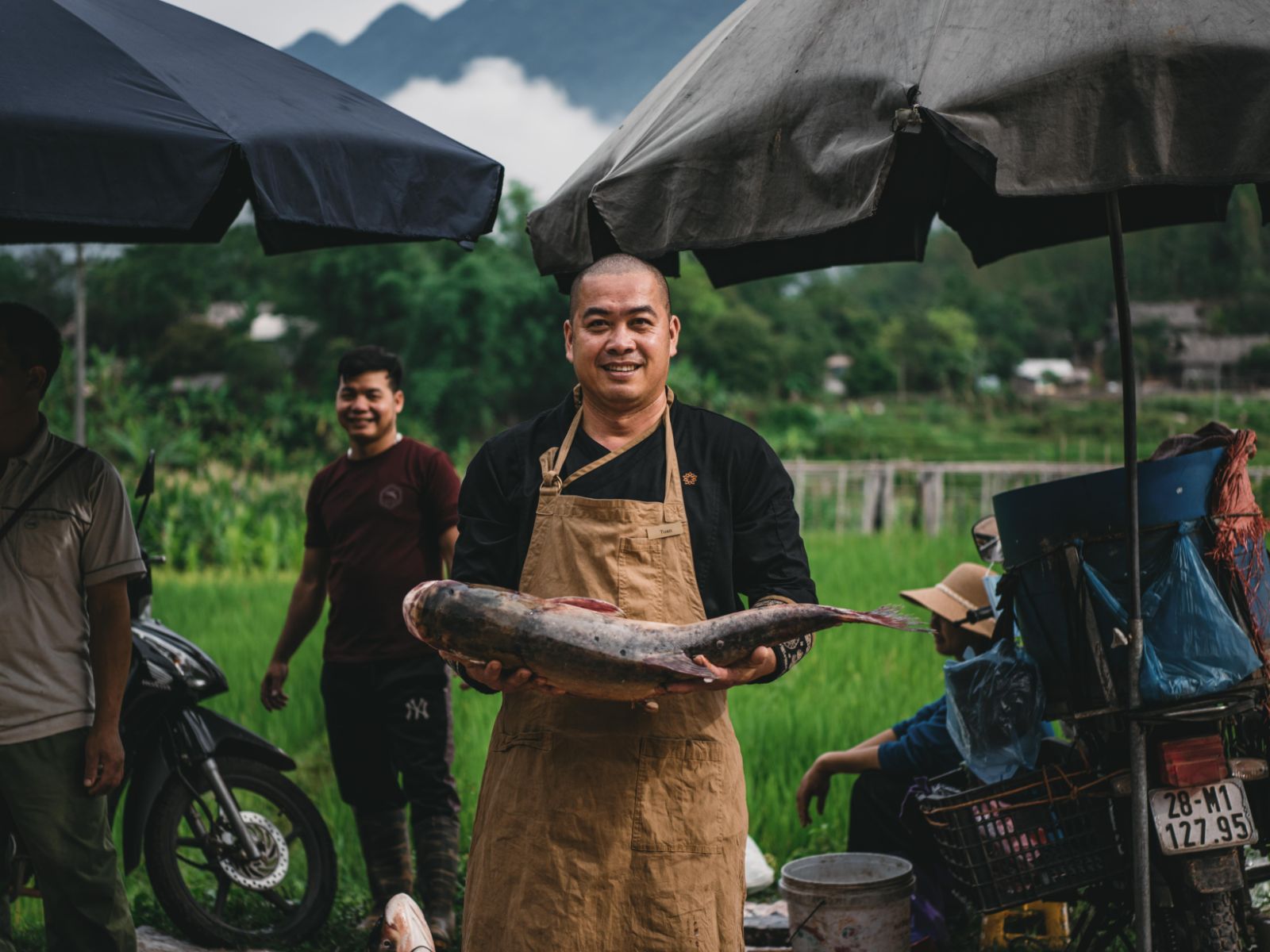7 Tales From Ethnic Thai
Thai local life, history, and rich culture are reflected in their unwritten folklore and tales.
The Thai are the third largest ethnic group in Vietnam, living mainly in the Northwestern regions of Vietnam. Their rich culture is reflected in their stilt houses with thatched roofs, colorful weaving crafts, and folktales passed through the generations by word of mouth.
Scroll down to read 7 tales that provide insight into the vibrant culture of ethnic Thai.
1. Ancient Embroidery Patterns
.jpg)
Thai people bring everyday life into their embroidery patterns.
Thai people blend many everyday things into embroidery patterns, including leaves, wildflowers, and different animals. This is how they show their thankfulness for everything around them and remind younger generations to appreciate their surroundings. Elderly people tell a tale: “In ancient times, after eight suns were brought down, the ninth sun fled and left humans to live in the dark. Humans sent a duck carrying a rooster on its back to find and sing to call the sun. To express their gratitude, Thai people embroider duck patterns into their brocade.”
2. Pieu Shawl
It’s easy to recognize a Thai woman from her Pieu shawl. It is used to keep her hair in shape as well as add an elegant look. In olden times there was a rule that required Thai women to wear the Pieu whenever they ventured outside.
It often takes from two to four weeks to weave a single Pieu from colored yarn and its beauty is praised in the following Thai poem:
She weaves gold and silver threads into beautiful brocade.
She weaves silk threads into beautiful flowers.
Men in villages become dreamers.
To have her embroider their handkerchiefs.
3. Hoa Ban Festival
.jpg)
Ban Flowers are blooming all over Avana Retreat in March.
When spring comes and the bauhinia flower (hoa Ban) starts to bloom at its best all over the mountain hillsides, the Thai gather together to celebrate one of their most important festivals.
Hoa Ban festival demonstrates the Thai spiritual culture and pays homage to Nàng Ban - the Goddess of the bauhinia flower. People get dressed traditionally and nicely, pray for peace and good weather for abundant crops all year round. Hand in hand, they participate in ancient dances when the night falls down.
Bauhinia is named after a graceful mountain suite in Avana.
4. Thai Special Hair Mask
Thai women have a secret for their long, black, strong hair. They make their own hair mask from fermented rice water, apply it to wet hair, leave it for 15 minutes, and rinse it with water. Vitamin A, B, and C in fermented rice water help to nourish the hair structure and give it a shiny look. When getting married, a Thai girl will have a “tang cau” ritual where elder women in the family will help put her hair up in a bun. This ritual is still quite popular in Black Thai communities in Son La and Dien Bien provinces. The hair-bun is meant to distinguish a single woman from a married one.
5. Dating Tradition of Thai People: “Poke Her House If You Love Her”
.jpg)
The young man carries a stick, and makes his way at midnight to the girl's stilt house.
Maybe the most well-known ritual of the Thai people is the “floor poking” ritual. A young man, carrying a stick, makes his way at midnight to the stilt house of a girl he loves. Then, from below, he pokes the stick at the point on the floor where she is sleeping. If the girl doesn’t like him she will stay silent and pretend to be still asleep. If she has feelings for him she will open the door and go downstairs to see him. Often they will sit together on the stairs talking until the sun rises in the morning. After a few nights, the young man will then meet her parents and ask for permission to marry their daughter.
6. The Afterlife
The Thai ethnic people believe that each person has more than one soul. As a result, when a man passes on to the afterlife, the Thai believe that the souls (khuan) in his head become holy ghosts (phi). The souls in his four limbs become house ghosts (phi huon) and remain in the house with the living while taking the family’s altar as their refuge. Thai people also believe that trees have souls. When a tree dies, its spirit will reside in Muong Pu Pau in the forest where the dead are buried. Then(s) rule heaven. Phi(s) rule the land, rice fields, forests, rivers, and streams. People have to ask Phi’s permission whenever they want to build a house, cultivate a new area, or go fishing or hunting.
7. Lam Rice
.jpg)
Many people may know Lam Rice - the Thai’s most well-known food, but only a few know its origin. Historically, local people often had long trips for hunting in the forest. They discovered that bamboo joints could substitute for both pot and bowl. That idea helped make their luggage their carry-on luggage lighter and their travels less labor-intensive and more convenient.
To cook Lam rice, Thai people cut young bamboo joints that were available in the forest. They put sticky rice into them, added fresh spring water, sealed it with banana leaves, and roasted them on charcoal fire until the bamboo turned black. With bamboo joints, they could also cook soup from wild vegetables.
Well-cooked Lam rice has a distinctive flavor of tender rice with a fragrant young bamboo fragrance. It is best eaten with Thai grilled meat and served either hot or cold.


